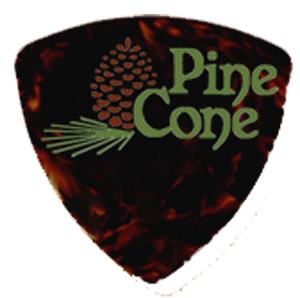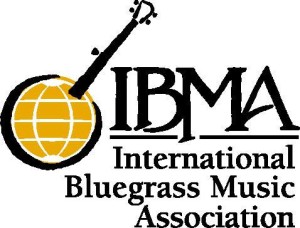“Presenting Bluegrass: Engaging a New Audience” was the topic of a special interest professional development session during the 57th Annual Association of Performing Arts Presenters (APAP) Conference held in New York City, Jan. 10-14, 2014.
The nearly hour-long session was among a wide array of professional development workshops and forums at the global performing arts conference and marketplace that also featured more than 1000 artist showcases (including a few bluegrass-oriented ones), exhibition halls, daily plenary sessions and keynote speakers.
Citing a Simmons Market Research study, moderator Mike Drudge noted that there are more than 20 million bluegrass fans in the United States, and that more than 350 bluegrass festivals take place here annually. The president of Class Act Entertainment, a booking agency that celebrated its 20th anniversary last year, was reticent to define exactly what constitutes bluegrass music. “It’s American roots music, highly participatory, family-friendly, and a high percentage of fans also play an instrument,” he said. The bottom line, however, is that “folks will drive a long way and pay good money to see acts that they love.”
Echoing those sentiments, Howard Epstein, who launched a bluegrass concert series at Miami University in Oxford, Ohio decades ago and was among the first to present this music in a theater setting — rather than in a UFW hall or nightclub — expressed his belief that fans willingness to drive long distances “may stem in part from limited opportunities to see bluegrass artists live outside of festival season,” which generally extends from spring into summer. “There are people who are really gung-ho. We don’t see that [so much] with jazz and blues audiences. It’s fairly unique.”
Other unique aspects of presenting bluegrass cited by Drudge include:
* Accessibility of artists who are generally happy to present workshops (a mainstay at most festivals), outreach shows, in-school programs, and residencies.
* Youth interest and involvement is a big part of many festivals – with picking by some talented kids and teens that rivals that of some of the artists on stage.
* Symphonic collaborations; he noted that such artists as Cherryholmes, Bela Fleck and The Kruger Brothers have engaged in this.
Susan Newberry, former executive director of PineCone – Piedmont Council of Traditional Music in North Carolina, said that while there is “a built-in audience” for bluegrass music in North Carolina’s Triangle area, “you still have to cultivate and maintain that audience by bringing in a wide variety of bluegrass artists.” Fortunately, she continued, “there’s a huge breath and variety of the genre being played today.” She ticked off old-school, straight-ahead, progressive and newgrass, among other variants/variations. “It’s very, very high quality music. The biggest obstacle in our area was to get away from some of that old yee-hah image. Once you get past that, You’re hooked for life.”
 PineCone is a nonprofit membership organization founded in 1984 to honor North Carolina’s unique traditional music heritage and sponsor concert series in the Triangle area. Newberry said PineCone has presented a broad range of artists over the years, from the old tried-and-true to younger and emerging ones. “It may not be your cup of tea, but it’s going to be the best quality artists we can put on stage.”
PineCone is a nonprofit membership organization founded in 1984 to honor North Carolina’s unique traditional music heritage and sponsor concert series in the Triangle area. Newberry said PineCone has presented a broad range of artists over the years, from the old tried-and-true to younger and emerging ones. “It may not be your cup of tea, but it’s going to be the best quality artists we can put on stage.”
She expressed pride that the 2,800-member International Bluegrass Music Association (IBMA) opted to move its annual fall business conference, International Bluegrass Music Awards Show, five nights of Bluegrass Ramble evening showcases on seven stages, and two-day Wide Open Bluegrass Festival, to Raleigh last fall. “My hometown was totally abuzz with having the IBMA there,” she said. The week’s events reportedly drew an estimated cumulative attendance of 150,000, with the bulk of that for the festival and some 5,000 actual conference attendees.
After a long stint in Nashville beginning in 2005, the IBMA partnered with The Greater Raleigh Convention & Visitors Bureau, PineCone, the City of Raleigh, and a local organizing committee to have the event in North Carolina’s capital city for the next several years. This year’s IBMA World of Bluegrass, slated for Sept.30-Oct. 4, will feature a talent-buyer track with special seminars for presenters, a reception, plenty of opportunities for networking and socializing, and lots of artist showcases scattered around town, she noted.
Panelists also briefly touched on the importance of sound. “Bluegrass fans are very, very picky about sound,” said Newberry. “You have to engage a good sound engineer — not a rock n’ roll guy – and have a hall with good acoustics.” Noted Drudge: “If the sound is great, people are going to come back and [also] will tell everybody how good the room sounded. People come to hear the banjos pop and the vocal harmonies. It’s true in any genre, [but] it’s really important in bluegrass.”
In response to a question from the audience about promotion, panelists mentioned the importance of presenters and artists partnering to get out the word and cited the importance of venue and band websites, email lists, state and local bluegrass music associations, and radio. Epstein noted that there’s less bluegrass programming on the radio today due to the loss of some public radio stations. Newberry opined that a lot of bluegrass fans were old-school country fans and suggested that presenters should seek to partner with mom-and-pop-oriented country music stations, in addition to public radio. Although not focused on promoting local gigs, Drudge cited SiriusXM’s Bluegrass Junction, Bluegrass Unlimited Magazine, and the online publications Bluegrass Today and The Bluegrass Situation as resources. Noting that “bluegrass fans appreciate virtuosic planning,” he also encouraged presenters to consider creating interesting combinations – such as an evening of all mandolins – as a way of building audience loyalty and attracting a new audience.


Like/Follow Us!